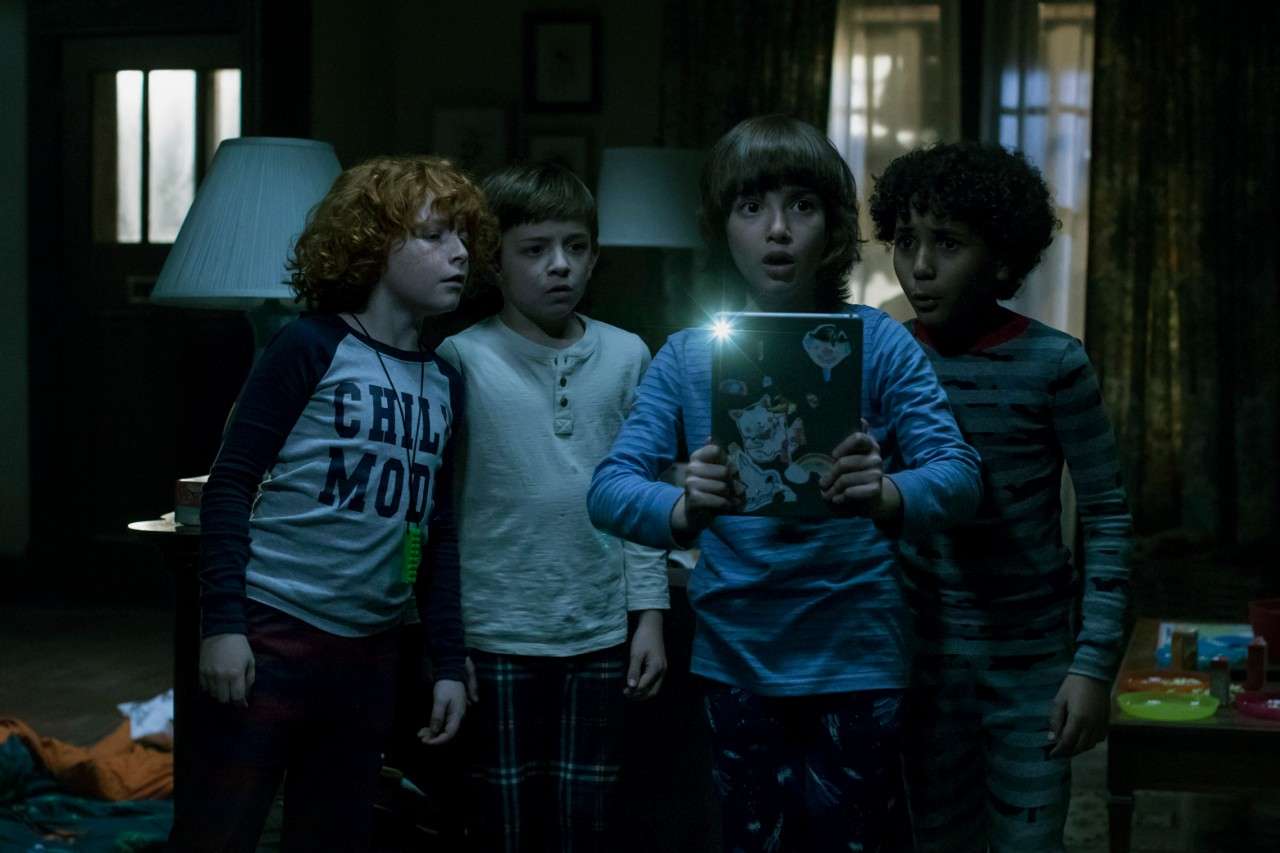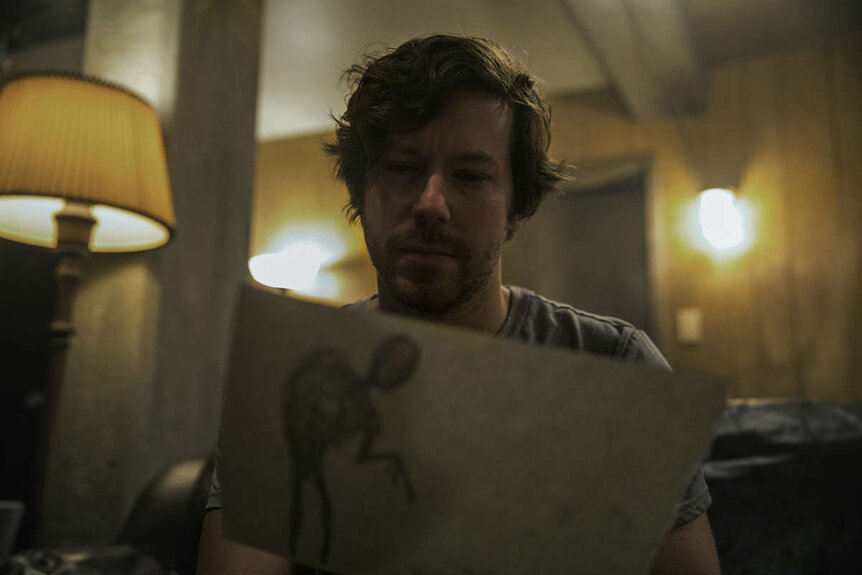Create a free profile to get unlimited access to exclusive videos, sweepstakes, and more!
Come Play is a horror movie about loneliness. Who else can relate?

Like the majority of movies to premiere in 2020, Come Play premiered in a very different world than its creators initially thought it would. But unlike many of the films viewers have actually been able to see in 2020, Come Play feels a little too pertinent. A horror movie about the dangers of loneliness and isolation premiering during a time when everyone is isolated from their friends, family, and even their coworkers due to the coronavirus is one hell of a horror movie.
**This story contains spoilers for Come Play.**
Written and directed by Jacob Chase, Come Play follows Oliver (Azhy Robertson), a boy with autism who finds his sole form of comfort in watching old episodes of SpongeBob SquarePants on his tablet, the device through which he also communicates with his mom, Sarah (Gillian Jacobs), and dad, Marty (John Gallagher Jr.). Despite his mom’s efforts, Oliver is nonverbal and shows no interest in playing with the boys at school or doing... really anything else beyond poking around on his tablet. His isolation from the rest of the world becomes a much bigger problem when his frustration and fear — and that of his parents — manifest in Larry.
Larry is a monster. Larry is misunderstood. Larry is lonely. And if you’re lonely, too, Larry will be your friend — and erupt from the digital pages of the book he lives in to kill you.
“As we know with horror and sci-fi, it gets almost kind of harder to tell spooky stories in the modern age because we are so connected,” Gallagher tells SYFY WIRE ahead of the film’s premiere on Oct. 30. “And I just thought that it was a great use of technology to not avoid it or ignore it, but to directly involve it, and to kind of turn the genre on its head a little bit by making it be about being over-connected.”
The more someone reads of this ebook Larry lives inside, the more he’s able to interact with our world until, finally, he’s able to use technology and light to enter the world and become a fully formed monster with spidery fingers and impossibly long, creaking limbs. And while the monstrous version of Larry — which, yes, the monster’s name is really Larry — is terrifying in its own right, 2020 adds an extra layer of fear to the procession.
“While Oliver may be the main character and sort of the chief focus [as] our character who's isolated and so lonely, [it definitely was] my intention to bring that out in every single one of these characters in their own specific ways,” Chase tells SYFY WIRE’s Who Won the Week podcast. Each of the characters — Oliver, Sarah, and Marty — struggle with their own versions of what it means to be alone. For Oliver, it’s a struggle to communicate with others because he’s on the spectrum. For Sarah, it’s the crushing weight of the responsibility of taking care of her son, a task she feels she’s alone in due to what she sees as her husband’s apathy. And Marty perhaps deals with a more obvious form of isolation from his work as an overnight parking attendant: He’s literally alone for most of his days, sitting quietly in a small glass box and staring out into the night.
“I think each of them are struggling to communicate with each other,” Chase explains. “When we don't communicate in a healthy fashion, we end up sort of isolating ourselves, whether that's physically or emotionally, and I think having characters be able to come to... understand one another, to have empathy for people who are different than us, I think that's the thing that in the film ultimately brings a lot of these characters together.”
As Gallagher points out, technology is often used to replace voids in our modern life. The entire film shows ways in which technology can take over a family, but, in this family’s case, it’s literally “this supernatural entity coming to try and kidnap [a] son and take him from [his family],” Gallagher says. Just when Marty and Sarah think that what they’re dealing with on the surface is hard enough, they suddenly finds himself up against a literal monster. “[Marty] goes from fighting for his family’s survival in one sense to really fighting for his family’s survival in a quite literal sense by the end of the film,” he adds.
Ultimately, it’s Sarah’s love for her son that saves him; she sacrifices herself before Larry can drain him. It’s a sacrifice that finally allows the pair a moment of the connection Sarah so desperately sought with her son.
“Whether it's the kids or the parents or the parents and the kids, the idea that they are coming to understand one another in a deeper way throughout this otherwise horrifying experience, they're all going through is what I think helps,” Chase says. “I think the more we understand our neighbors, our fellow citizens, or [the] empathy we have for people who are not exactly like us… we can function [better] as a society and not be lonely.”
For our full interview with writer/director Jacob Chase, check out SYFY WIRE’s Who Won the Week podcast below.


























